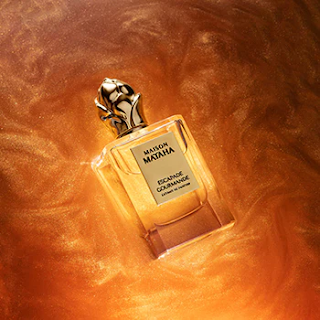Fragrances have been a part of human culture for centuries. Whether for personal grooming, to create a particular ambiance, or to mask unpleasant odors, fragrances have become an essential part of our lives. From ancient times to modern-day, fragrances have evolved with time. But the core principle remains the same - to evoke emotions and memories.
Fragrances and perfumes add a pleasant odor to a person, animal, object, or space. They are made up of aroma compounds, solvents, and fixatives. The aroma compounds are essential oils, absolutes, and synthetic fragrances used to create the scent. The solvents are used to dilute the aroma compounds, while fixatives make the scent last longer. For a lasting scent, you can try Krystal Fragrance quality perfumes at affordable prices.
In this blog, we will go through the working and notes of the fragrance, further depicting the aromas that define scents.
The Working Of Fragrance
Fragrances work by evoking an olfactory response in the brain through the nose. When we smell a perfume, the molecules from the scent enter our nasal passages and stimulate the olfactory receptors. The olfactory receptors send signals to the brain's olfactory bulb, which processes the information and recognizes the scent.
Fragrances can evoke emotions and memories, making them a powerful tool for creating moods and ambiance. Combining different aroma compounds in a fragrance can create a unique and complex scent profile. The concentration of these aroma compounds can also impact the intensity and longevity of the scent. Overall, fragrances work by stimulating our sense of smell and creating a sensory experience.
Fragrance Creation
Fragrances can be created from various sources, including natural plant extracts, synthetic compounds, and a combination of both.
Natural perfumes are derived from botanical sources such as flowers, fruits, leaves, and woods. Essential oils, concentrated extracts of these botanical sources, are commonly used in natural fragrances.
On the other hand, synthetic fragrances are created in a laboratory using a combination of aroma chemicals.
Use Of Fragrances
Fragrances can be used in various products, including
Perfumes
Colognes
Body sprays
Candles
Air fresheners and
Cleaning products
The use of fragrances is not limited to personal care and home products. Fragrances can also be used in other industries, such as food and beverage, pharmaceuticals, and even automotive. The food and beverage industry uses fragrances to enhance the flavor and aroma of products. In contrast, the pharmaceutical industry may use fragrances to mask the unpleasant smell or taste of certain medications.
What Are The Different Types Of Fragrance Notes?
Krystal Fragrances are composed of different aroma compounds, categorized into three main fragrance notes: top, middle, and base. These notes work together to create a unique and complex scent profile.
Top Notes:
These are the initial, fleeting scents perceived when a fragrance is first applied. These notes are typically light and fresh and are often derived from citrus fruits, herbs, and green or floral scents. Examples of top notes include bergamot, lemon, grapefruit, lavender, and mint.
Middle Notes:
Middle notes, also known as heart notes, are the scents that develop after the top notes have dissipated. These notes are typically more floral or spicy, including rose, jasmine, cinnamon, and nutmeg. Middle notes are often used to give a fragrance its distinctive character.
Base Notes:
Base notes are more profound, long-lasting, and emerge after the middle notes fade. These scents generally derive from woods, resins, and musks and can include fragrances such as sandalwood, patchouli, vanilla, and amber. Base notes give a fragrance its lasting power and can help to anchor the scent.
Different Types Of Fragrance Families
Fragrance families are groups of scents that share similar characteristics and are often used to classify fragrances. Understanding fragrance families can help you identify scents you may enjoy based on your preferences. The most common fragrance families include:
Floral Fragrances: Dominated by scents of flowers, like jasmine, rose, and lily of the valley. These fragrances are often light, airy, and feminine.
Oriental Fragrances: Characterized by warm, spicy notes such as cinnamon, vanilla, and musk. These fragrances can be exotic and sensual and are often associated with the Middle East.
Woody Fragrances: These are scents derived from trees and woods, such as sandalwood, cedar, and oakmoss. These fragrances can be warm and earthy, and you'll often find them in men's fragrances.
Fresh Fragrances: Characterized by clean, crisp scents such as citrus, lavender, and oceanic notes. These fragrances are often used in products such as soaps, shampoos, and body sprays.
Citrus Fragrances: Dominated by the scents of citrus fruits such as lemon, lime, and bergamot. These fragrances are fresh and invigorating and are often used in products such as colognes and body sprays.
When selecting a Krystal fragrance, it can be helpful to identify which fragrance family or families you are most drawn to. This can help you narrow down your choices and find scents you will likely enjoy.



.jpg)
No comments:
Post a Comment